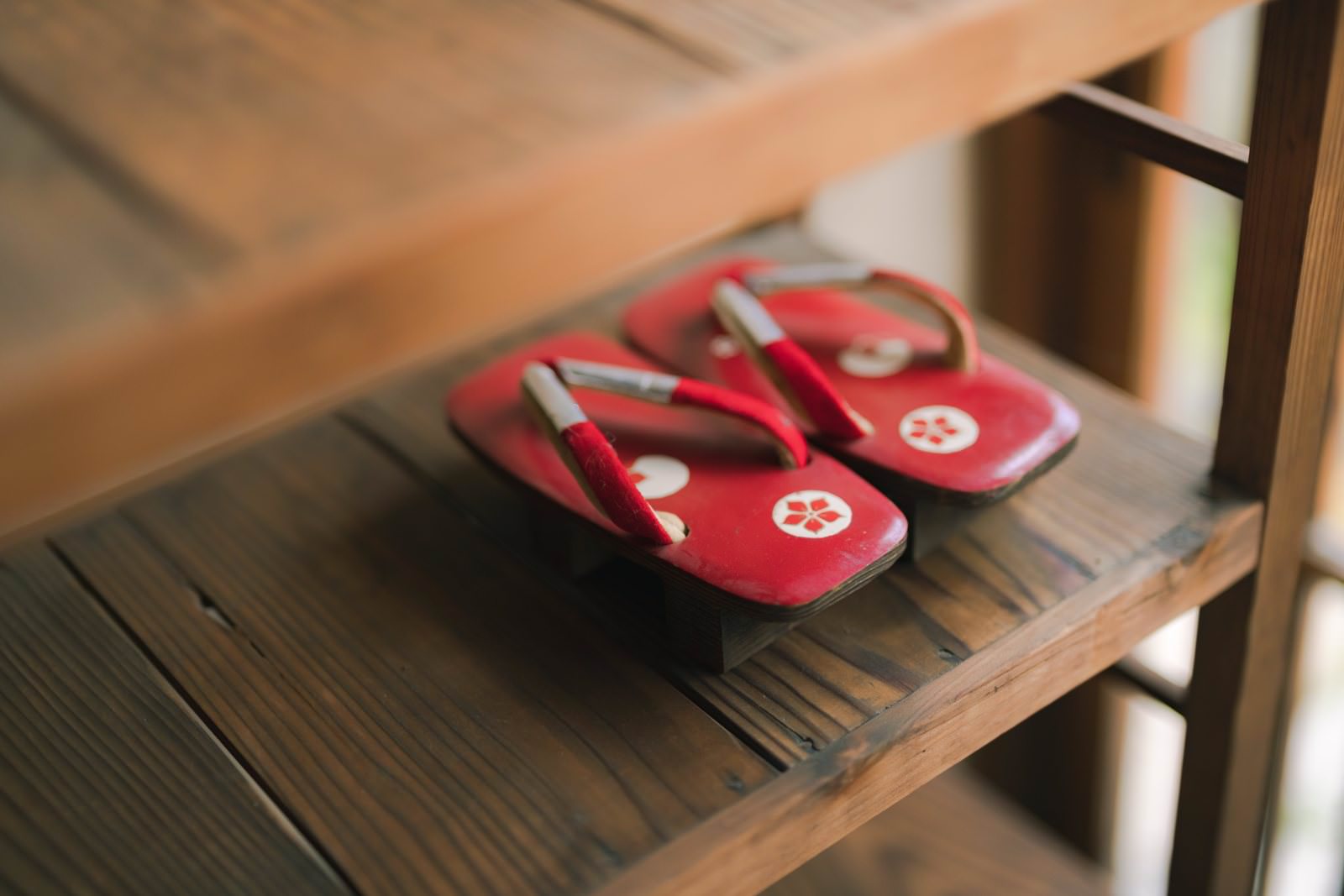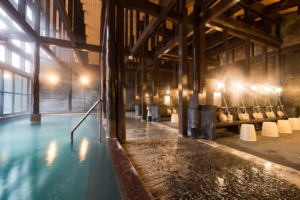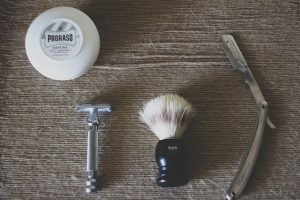In Japan, it is common to remove shoes at the entrance of a home. This practice is not only for keeping the house clean but is also part of traditional Japanese etiquette. As such, wearing shoes inside the house is considered impolite.
It is not just homes where shoes are removed; one is often asked to take off their shoes in places like ryokan (traditional inns), Japanese restaurants, restaurants with tatami rooms, temples, and shrines. This custom reflects a commitment to cleanliness and serves as a manner of showing respect.
In my home in the UK, we also follow the rule of removing shoes at the entrance and ask our guests to do the same.
When and How to Remove Shoes in Japan
Japanese homes have a space called “genkan” at the entrance, where it is customary to remove shoes. The genkan features an area known as “tataki,” where shoes are taken off before stepping up into the higher interior of the house. This design helps prevent outside dirt from being brought into the home. The structure of the genkan itself serves to clearly separate the indoor and outdoor spaces, helping to keep the interior clean.
The custom of removing shoes in Japan is regarded as an act of maintaining cleanliness and showing respect for the culture of the place being visited. However, you might imagine that it is not necessary to remove your shoes in every location you visit. When entering a building, it is advisable to pay attention to whether you need to take off your shoes and what others around you are doing. While this may be a new experience for you, it is also part of the joy of traveling in Japan.
What Should You Do at a Genkan (玄関)?
Japanese homes have a space called “genkan (玄関)” at the entrance, where it is customary to remove shoes. The genkan features an area known as “tataki (三和土),” where shoes are taken off before stepping up into the higher interior of the house. This design helps prevent outside dirt from being brought into the home. The structure of the genkan itself serves to clearly separate the indoor and outdoor spaces, helping to keep the interior clean.
The custom of removing shoes in Japan is regarded as an act of maintaining cleanliness and showing respect for the culture of the place being visited. However, it is not necessary to remove your shoes in every location you visit. When entering a building, it is advisable to pay attention to whether you need to take off your shoes and what others around you are doing. While this may be a new experience for you, it is also part of the joy of traveling in Japan.
Etiquette at the Genkan in Japanese Homes
In Japanese homes, there is often a shoe storage unit called a “geta-bako (下駄箱)” at the genkan. As you might imagine, this storage is reserved for the residents of the home. For visitors, it is usually sufficient to simply remove their shoes at the genkan.
However, there are several manners to observe even after removing your shoes at the genkan:
- Shoes should not be left haphazardly; aligning them with the toes facing the entrance (i.e., outside) creates a polite impression.
- Additionally, when aligning your shoes, it is considered rude to turn your back toward the house. Thus, when you arrange your shoes, it is more appropriate to kneel so that your body faces as much of the interior of the house as possible. This behaviour is more in line with Japanese etiquette.
- Attempting to enter the house quickly and efficiently while turning your back toward the house, aligning your shoes, and stepping inside is not polite.
Does that sound complicated?
Even some Japanese sometimes struggle with it, and not everyone is aware of this etiquette. So, it is best to do your best in this regard.
Using Slippers Indoors: Tips and Cautions
When you enter a Japanese home, you may be offered slippers. These slippers are for walking around inside the house, but there are a few points to keep in mind.
First, it is acceptable to wear slippers in Western-style rooms, but you must remove them when entering a tatami room. Tatami is a traditional Japanese flooring material, and the culture emphasizes walking barefoot or in socks to preserve its soft texture and maintain cleanliness. You can walk on tatami with socks or stockings. This is also true in ryokan and traditional Japanese houses.
However, in Western-style rooms that have carpet, some households may prefer a no-slippers policy, so it’s important to be aware each time.
Cautions When Using Toilet Slippers
In many Japanese homes, there are also slippers specifically designated for use in the toilet. This is part of a hygienic consideration to prevent slippers used in the toilet from being brought into other rooms.
When entering the toilet, change into the designated slippers, and make sure to return to your original slippers when you exit. Carelessly walking around the house in toilet slippers can inconvenience the residents, so be mindful.
The practice of distinguishing between different types of slippers reflects the Japanese culture’s emphasis on cleanliness and consideration for others, which is something to be aware of when visiting.
The culture of removing shoes in Japan goes beyond mere etiquette. It expresses a mindset that values cleanliness and consideration for others. For those encountering this culture for the first time, it may be a little confusing, but it is likely to be a refreshing and valuable experience during your visit to Japan. Always be mindful of where you should remove your shoes, and it may also be a good idea to check that your socks do not have holes before entering.
Removing Shoes in My Home in the UK
In my UK home, we adopt a shoe-removal style. Therefore, all the carpets inside are always kept in a very clean condition. Additionally, being barefoot feels relaxing and pleasant. My children have also been accustomed to this style since they were young, so they are resistant to walking around the house in shoes.
When inviting Japanese or British acquaintances to my home, they understand this style and always take off their shoes. In particular, my British friends seem to enjoy the shoe-removal practice. I think that more households in the UK are also adopting this style to keep their carpets clean.
(Additional note (2022): More than ten years ago, when inviting tradespeople like plumbers or electricians, they would naturally enter wearing their shoes and walk around in my house. It was acceptable since it would be unsafe for them to work without shoes.
Recently, due to the pandemic, there has been an increase in people who come into my house with plastic wrap over their shoes, or ask, “Is it okay if I come in with my shoes on?” They often go outside to their vehicles to get tools, so I usually say, “Please come in with your shoes on,” considering their ease of work.
I have moved several times in the past and have put my house up for sale each time. During those times, potential buyers and real estate agents would come for viewings, and they always entered and walked around the house in their shoes. Since this was the norm, I accepted it, of course. However, because I had cleaned the house spotless beforehand, I had mixed feelings when someone walked around in their shoes right after that.








